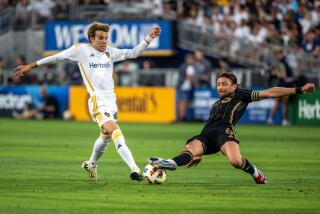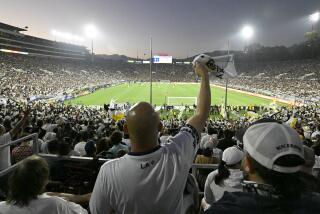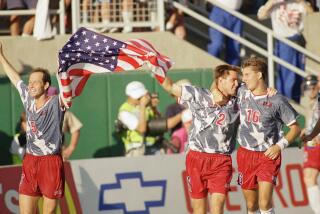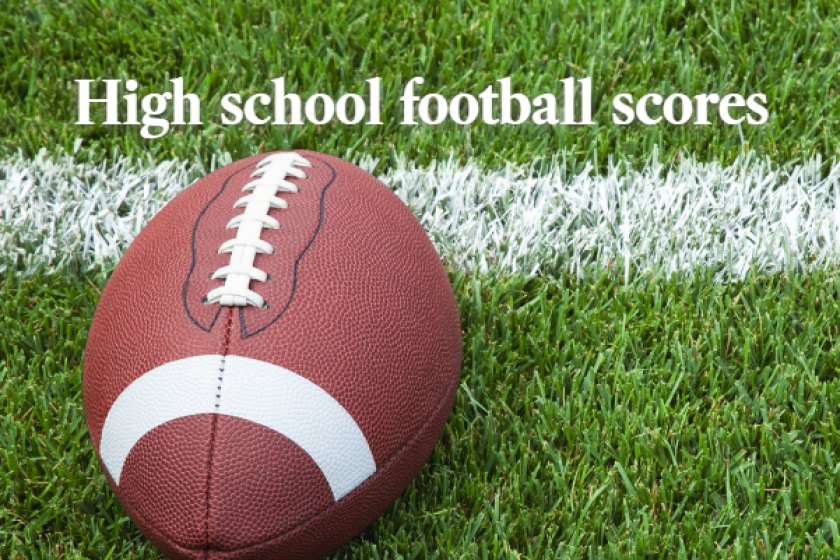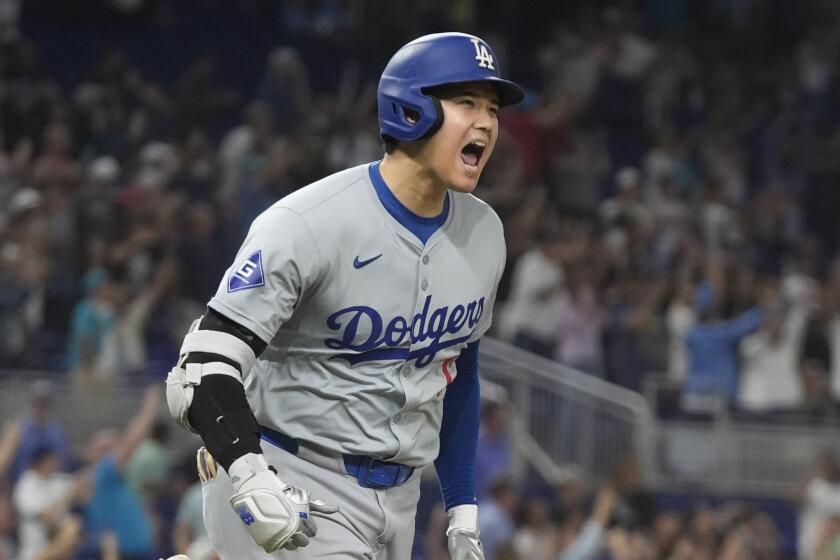Rise of MLS-affiliated ‘lower league’ is a win-win for players, teams
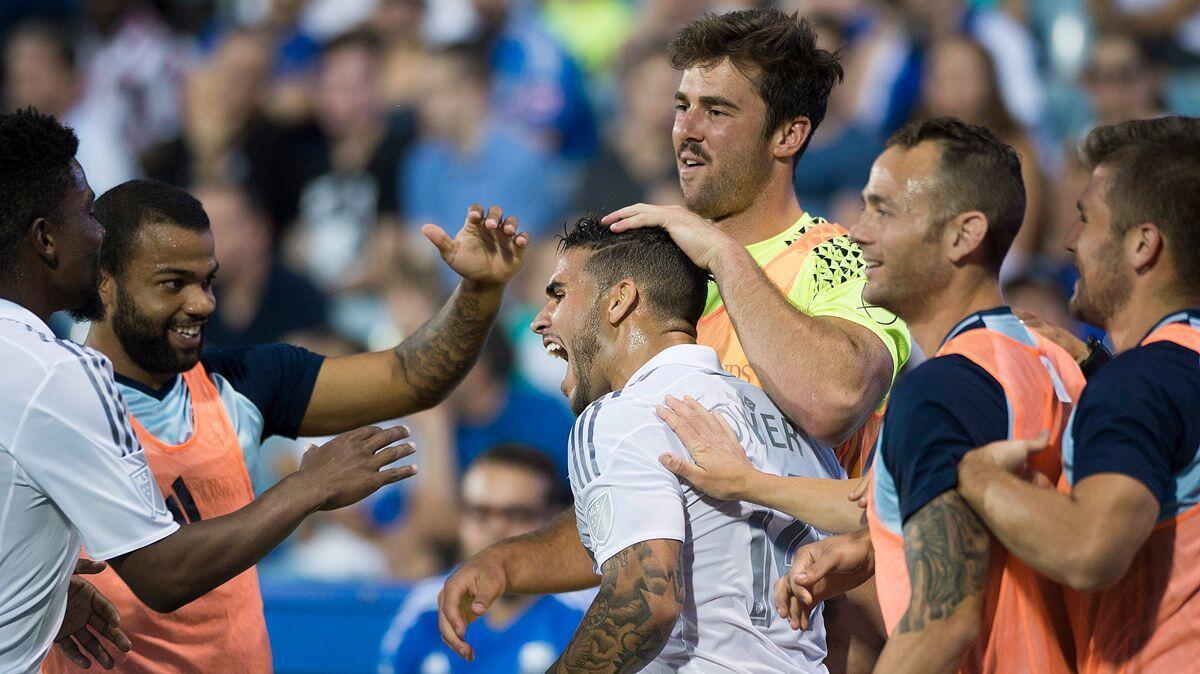
Dom Dwyer is a 26-year-old forward with national team aspirations and a Western Conference-best 50 goals over the last three MLS seasons. Yet he says his career in the U.S. may have ended after a brief four-minute appearance if not for a league many casual soccer fans know little about.
“I might not have gotten a chance in the MLS. And that’s really what it’s about,” said Dwyer, who grudgingly accepted a demotion to the Orlando City of the third-tier United Soccer League after playing just one MLS game as a rookie for Sporting Kansas City.
Richie Marquez tells a similar story. A four-year starter at the tiny University of Redlands, Marquez struggled with the huge step up in competition after being drafted by Philadelphia in the 2014 MLS SuperDraft. So the Union loaned him to the Harrisburg City Islanders of the USL, where Marquez led the league in minutes played while leading the Islanders to the league championship game.
He’s been a stalwart in central defense for the Union ever since.
“I needed that year,” Marquez said of his USL season. “I was able to build my confidence and work on things I never worked on. Maybe I wouldn’t be in the league, where I’m at right now, without the USL.”
USL President Jake Edwards, whose league begins its 2017 season next month, appreciates the compliment. But the USL, which formed in 2011 after the first and second divisions of old USL merged, is much more than just a minor-league affiliate of MLS. Over the past six years it has doubled in size, to 30 teams in 20 states and two Canadian provinces, making it the biggest soccer league in North America. And in January it was sanctioned as a Division II league, ranking behind only MLS on the U.S. soccer pyramid.
“Our vision,” Edwards wrote in an e-mail interview, “is to be the most globally recognized and successful Division II league in the world. We believe we have developed a stable model as a league that will allow us to unite passionate soccer fans with a proven professional soccer experience.”
The USL might still be struggling for relevance and a foothold in the national sporting landscape if not for a 2013 agreement in which the league, then known as USL Pro, replaced the MLS reserve league as a primary developer of MLS talent. Under the agreement, MLS clubs would partner with USL teams, loaning at least four players to each affiliate.
A year later the Galaxy took that a step further by launching its own USL outfit. This season 10 USL teams will be owned or operated by MLS franchises while another 12 will have affiliate relationships — among them the newly minted Orange County Blues, which is paired with the fledgling Los Angeles FC, an expansion club that begins MLS play in 2018.
“We don’t have a set number for expansion at this time,” Edwards said. The league, which added three teams this year (Reno, Nev., Ottawa and Tampa Bay), will add a Nashville franchise next spring and is vetting applicants in Northern Virginia and Baltimore.
The USL partnership helps MLS teams by allowing them to sign or loan players to their lower-league affiliates, who in turn provide regular playing time in a competitive environment, in much the same way Major League Baseball franchises farm their young players to minor league teams. But the agreement also benefits the USL by providing it with a steady stream of talent that might otherwise have gone to the NASL, another Division II professional league with eight teams in the U.S., Canada and Puerto Rico.
Ten players on the U.S. U-20 national team are USL players while more than 60 others have international experience. And several dozen more will shuttle to the USL from their MLS clubs this season; last year, for example, 12 players appeared in games for both the Galaxy and Galaxy II.
“We have an excellent relationship with MLS and it has currently helped in the overall growth of our league,” Edwards said. “If you look at the most successful franchises in MLS over the past couple of years — Orlando, Portland, Seattle, Toronto — they all have one thing in common: they were successful USL teams. They built their fan base and program in the USL.”
Some teams built their coaching staffs there as well. The Galaxy’s new staff includes three men promoted from Galaxy II, among them Curt Onalfo, who had two head coaching trials in MLS before coming to the Galaxy to run the reserve league team that eventually became Galaxy II, the team’s USL franchise.
“It was a situation where I was able to help develop players for this organization and at the same time continue to develop myself as a coach,” said Onalfo, who replaced Bruce Arena as Galaxy coach in December
Other MLS coaches who gained experience in the USL or its precursor include Minnesota’s Adrian Heath, Houston’s Wilmer Cabrera and Brian Schmetzer, who won an MLS Cup last season after taking over the Seattle Sounders at midseason.
“The USL is … where players and technical staff can gain valuable professional experience,” Edwards said.
That’s something Dwyer learned the hard way. A first-round draft pick, he made one brief MLS appearance for Sporting Kansas City in his first season before being sent to the USL at the start of his second year. In half a season there, he broke the league’s single-season scoring record, earning a call-in to Kansas City and an eventual starting spot in the MLS Cup final.
“It’s a humbling experience to go down to a lower league,” said Dwyer, who originally fought the reassignment. “But it was the best thing for my career. You need games as a player.
“If you’re sitting on the bench you can’t get better.”
Twitter: kbaxter11
More to Read
Go beyond the scoreboard
Get the latest on L.A.'s teams in the daily Sports Report newsletter.
You may occasionally receive promotional content from the Los Angeles Times.

